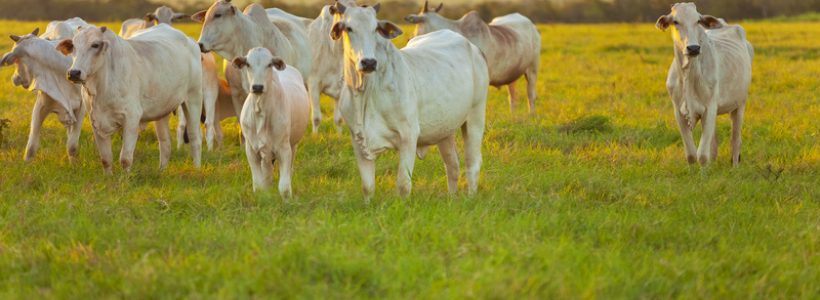 03 Jun 2022
03 Jun 2022
Narasin, salinomycin, and flavomycin supplementation appear to have potential benefits on performance and ruminal fermentation characteristics of Bos indicus Nellore cattle fed with forage-based diets.
Beef cattle production systems generally rely on forage-based diets as the main nutrient source for meat production worldwide. However, factors like seasonal variations in pasture availability, nutritive value, and sward structure of high-forage diets, have significant influence on nutrient utilization and animal performance causing inadequate energy intake (Hills et al., 2015; de Souza et al., 2017). Also modifying the physical effect exerted by forage limiting rumen fill (Conrad et al., 1964; Clark and Armentano, 1997).
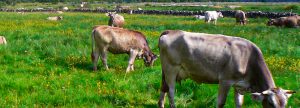
Feed additive inclusion for enhancing productivity in beef cattle systems through the modification of ruminal microbiome represents an important nutritional tool(Weimer et al., 2008; Schären et al., 2017). Looking to generate positive impacts on diet fermentation routes, digestibility and nutrient utilization (Tedeschi et al., 2003). However, most of the research conducted on feed additive inclusion up to date, was focused on high-concentrate diets (Duffield et al., 2012). Therefore, knowledge regarding the effects of alternative feed additives on cattle fed high-forage diets is still scarce. It is also necessary to establish if the inclusion of feed additives in forage-based diets for 140 d (Rogers et al., 1997; Odongo et al., 2007) can affect the persistence of efficacy. Taking into account that the prolonged use of feed additives within diets generates ruminal microbial adaptation which results in a diminished response (Klein et al., 2005).
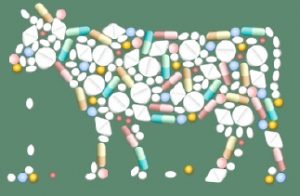
Narasin
Narasin is a ionophore that alters rumen fermentation dynamics (Miszura et al., 2018), plasma metabolites by increasing glucose levels (Sardinha et al., 2020) and reducing urea concentration (Polizel et al., 2020). It is used in beef cattle industry to enhace animal performance (Silva et al., 2015; Polizel et al., 2020).
Salinomycin
Salinomycin is also a ionophore used to improve animal production by favorably altering the acetate:propionate (Ac:Pr) ratio (McClure et al. 1980; Bagley et al., 1988).
Flavomycin
Flavomycin (bambermycin) is a non-ionophore antibiotic that inhibits peptidoglycan synthesis of the bacterial cell wall (Volke et al., 1997). It also appears to have indirect benefits on gut tissue protein turnover by suppressing gram-negative pathogenic bacteria (Edwards et al., 2005), as well as gram-positive bacteria which might allow increased dietary fermentation, resulting in a greater propionate molar proportion (Edrington et al., 2003).
Study
Although feed additives have similar ruminal action mechanisms, animal performance might vary depending on: the animal, dose and type of diet (Bretschneider et al., 2008). Based upon this, it was hypothesized that supplementation with narasin, salinomycin, or flavomycin would impact nutrient digestibility, modify rumen fermentation parameters, and improve productivity of B. indicus Nellore cattle fed a forage-based diet. In order to test this hypothesis, researchers designed a study where they could assess the impacts of narasin, salinomycin, or flavomycin supplementation by evaluating rumen fermentation characteristics and apparent nutrient digestibility (experiment 1), as well as feed intake, and growth (experiment 2). The experiment was carried out with B. indicus cattle which was fed a high-forage diet for a period of 140 days. These studies were conducted at the University of São Paulo, in Piracicaba campus.

Materials and methods
Experiment 1
Thirty-two rumen-cannulated B. indicus Nellore steers [initial body weight (BW) = 220 ± 12.6 kg; age = 20 ± 1.0 mo] were assigned to individual pens. Within block (n = 8), animals were randomly assigned to 1 of 4 treatments:
The administration rates for NAR, SAL, and FLA were used according to manufacturer’s recommendation. The experimental period lasted 140 d and was divided into 5 periods of 28 d each (0, 28, 56, 84, 112, and 140 d).
Sampling
Samples of the supplement were collected weekly, pooled across all weeks within each period, and analyzed to establish a nutrient profile. From days 23 to 27 (period 1), 51 to 55 (period 2), 79 to 83 (period 3), 107 to 111 (period 4), and 135 to 139 (period 5), total fecal production was individually collected to
determine apparent nutrient digestibility. Total fecal production was collected and quantified twice a day using an electronic scale.
Individual shrunk body weight (BW) was collected on day 0 after 14 hr of feed and water withdrawal to determine initial BW and for establishing randomized blocks and treatments. Forage, supplement, and total dry matter intake (DMI) were recorded daily from each pen by collecting and weighing non-consumed feed (forage only).
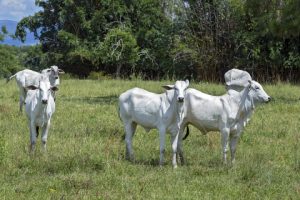
Experiment 2
One hundred and sixty-four B. indicus Nellore bulls (initial shrunk BW = 299 ± 2.5; age = 23 ± 3.0 mo) were assigned to pens in a randomized complete block design according to their shrunk
BW (after 14 hr of feed and water restriction).
The experimental period lasted 140 d, divided into 5 periods of 28 d each. Bulls were kept in a covered feedlot (10 pens per treatment; 4 to 5 bulls perpen). Within blocks (n = 10), animals were randomly assigned
to the same treatments as in experiment 1.
Sampling
At the beginning (day 0) of the experimental period, individual shrunk BW was recorded after 14 hr of feed and water withdrawal to determine animal initial BW and to perform the randomization of the animals into blocks and treatments.
To calculate average daily gain (ADG) and feed efficiency (G:F), bulls were individually weighed on days 0, 28, 56, 84, 112, and 140 (final days of each period) after 14 hr of feed and water restriction. DMI was evaluated daily from each pen within each period by collecting and weighing non-consumed feed weekly.
Hay and total DMI of each pen were divided by the number of bulls within each pen and expressed as kilogram per bull/day. Within each pen, total BW gain and total DMI of each period
were used for bull G:F calculation. Samples of feed and orts were collected weekly, and pooled across all weeks within each period for further nutrient profile analysis as mentioned for experiment 1.
Results and Discussion
Consistent with findings from Reffett-Stabel et al. (1989) it was observed that total tract digestibility of nutrients was not affected by salinomycin supplementation when cattle consume corn-silage based diets. However, other authors have reported that supplementing flavomycin or monensin resulted in similar or reduced dry matter digestibility in beef cattle consuming forage-based diets.
Feed additives influence ADG, G:F, and DMI of animals offered a high-concentrate diet (Duffield et al., 2012; Golder and Lean, 2016). Similar results were observed, except for DMI, in animals offered a high-forage diet (Bretschneider et al., 2008). In the current study (experiment 2 only), intake was 7.9%, 8.8%, and 10.7 % greater for animals offered NAR compared with CON, FLA, and SAL, respectively. Similar results were observed when intake was expressed as BW percentage. Corroborating the obtained results from the previous study, Miszura et al. (2019) reported an increase of 7.55% in DMI by adding narasin in high forage-based diets.
It should be noted that DMI in the present experiment was not depressed by the inclusion of salinomycin in the diet, despite previous research reporting such outcome in forage and feedlot fed cattle.
According to previous studies, inclusion of feed additives in beef cattle diets normally influenced G:F by improving or maintaining ADG and reducing DMI. Within the current study, only narasin improved ADG by 14.8%, 11.8%, and 7.8% compared with CON, SAL, and FLA, respectively. This resulted in heavier animals at the end of the supplementation period.
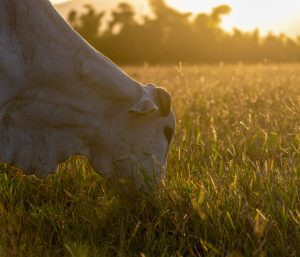
Conclusions
The obtained results for this experiment suggest that supplementing narasin to B. indicus Nellore cattle for 140 d might be a feasible alternative for optimizing rumen fermentation characteristics. Resulting in productivity improvements in grazing beef cattle.
Subscribe now to the technical magazine of animal nutrition
AUTHORS

Hybrid Rye Potential in Laying Hen Feed Rations
Gwendolyn Jones
A day in the life of phosphorus in pigs: Part I
Rafael Duran Giménez-Rico
Use of enzymes in diets for ruminants
Braulio de la Calle Campos
Minerals and Hoof Health in the Pregnant Sow
Juan Gabriel Espino
Impact of Oxidized Fats on Swine Reproduction and Offspring
Maria Alejandra Perez Alvarado